Examples of current liabilities include accounts payable, short-term loans, and accrued expenses. These are usually incurred during daily business activities, such as purchasing inventory on credit or running operations. It’s vital for businesses to manage current liabilities effectively because they affect liquidity. A high ratio of current liabilities to current assets could signal potential cash flow issues, thereby impacting the financial health and operational stability of the company. Does the stockholders’ equity total mean the business is worth $720,000?
Ready to grow your business?
The accounting equation also indicates that the company’s creditors had a claim of $7,120 and the owner had a residual claim of $10,080. Another important aspect of financial analysis that stems from the accounting equation is the derivation of key financial ratios, such as the debt-to-equity ratio. This ratio is calculated as total liabilities divided by shareholders’ equity and serves to measure the degree of financial leverage a company is utilizing.
The balance sheet equation is the foundation of the dual entry system of accounting. It shows that for every debit, It shows that there is an equal and opposite credit for every debit, and the sum of all the assets is always equal to the total of all its liabilities and equity. The asset turnover ratio is a crucial measure of how efficiently a company uses its assets to generate revenue. A higher ratio indicates effective utilization of assets, whereas a lower ratio may reveal inefficiencies. However, the interpretation of this metric must be tailored to the specific industry since asset intensity can vary greatly. Investors should carefully compare the asset turnover ratios of companies within the same industry to obtain an accurate picture of operational efficiency.
Non-Current Assets: Long-term Investments
An asset account is a general ledger account used to sort and store the debit and credit amounts from a company’s transactions involving the company’s resources. That part of the accounting system which contains the balance sheet and income statement accounts used for recording transactions. The totals tell us that the corporation has assets of $9,900 and the source of those assets is the stockholders. The totals tell us that the company has assets of $9,900 and that the only claim against those assets is the stockholders’ claim. The purchase of a corporation’s own stock will never result in an amount to be reported on the income statement.
Report
Said differently, whatever value of the company’s Assets remains after covering what is a note payable its Liabilities belong to the owners. Whatever value is left after the company pays the money it owes to banks, suppliers, and employees belong to the company owners. This is also a cornerstone concept that underpins the Balance Sheet. The Balance Sheet shows the value of what the company owns (Assets), owes (Liabilities) and value left to owners (Equity). The Accounting Equation captures the relationship between Assets, Liabilities and Equity through a simple formula. It states that the Assets section must equal the sum of the Liabilities and Equity sections.
Receivables Turnover Ratio shows how efficiently a business collects debts. A higher ratio means faster collections, improving cash flow and financial health. Yes, asset turnover ratios differ across industries due to varying capital requirements. A highly competitive market may pressure companies to utilize their assets more efficiently to maintain profitability, potentially leading to a higher asset turnover ratio. Conversely, in markets with less competition, companies might not be as driven to optimize asset use, resulting in a lower ratio.
Factors Influencing the Asset Turnover Ratio
Handling liabilities well is key to a strong balance sheet and staying financially stable over time. By knowing these parts of the balance, people who invest or lend money can make better choices about a company’s future. Non-current assets are long-term investments that take time to turn into cash. They are things like buildings, machines, and special rights like patents.
What is the Accounting Equation? Explaining Assets = Liabilities + Equity
- Owner’s equity is directly linked to a company’s financial performance.
- The Net Income is the difference between $70,000 and $134,000.
- With an understanding of each of these terms, let’s take another look at the accounting equation.
- Other current debts might be short-term loans and bills that haven’t been paid yet.
- Knowing this equation is a must for those in corporate finance or studying business accounting.
- Therefore, grappling with this equation provides a solid foundation for analyzing financial performance and understanding how different transactions impact an organization’s overall financial position.
- As you see, ACI’s assets increased and its liabilities increased by $7,000.
Consequently, this limited perspective may lead to inaccurate financial assessments and ineffective budgeting strategies. This equation is essential for double-entry accounting and helps analyze financial health. If the equation is balanced then the financial statement can be prepared. Shareholder Equity is equal to a business’s total assets minus its total liabilities.
Equity is also referred to as net worth or capital and shareholders equity. Adjustments, such as depreciation, amortization, and bad debt write-offs, can also impact the accounting equation. For example, when a company records depreciation, it reduces both its assets (PPE) and its owner’s equity (retained earnings) while keeping the accounting equation balanced. In other words, the total amount of all assets will always equal the sum of liabilities and shareholders’ equity. Understanding the asset turnover ratio meaning and its implications helps stakeholders evaluate a company’s operational efficiency and make informed decisions regarding its financial health. While the total asset turnover ratio provides insights into asset efficiency, it doesn’t account for factors like profitability or cost management.
Now that we have a basic understanding of the equation, let’s take a look at each accounting equation component starting with the assets. For example, if a company becomes bankrupt, its assets are sold and these funds are used to settle its debts first. Only after debts are settled are shareholders entitled to any of the company’s assets to attempt to recover their investment.
- This makes sense when you think about it because liabilities and equity are essentially just sources of funding for companies to purchase assets.
- These liabilities are often necessary for funding large capital expenditures, such as property or equipment, thus facilitating growth opportunities for businesses.
- This transaction affects both sides of the accounting equation; both the left and right sides of the equation increase by +$250.
- And Accounting Equation is the premise on which the double-entry accounting system is built.
- In addition, we show the effect of each transaction on the balance sheet and income statement.
- As a core concept in modern accounting, this provides the basis for keeping a company’s books balanced across a given accounting cycle.
- Understanding both current and long-term liabilities helps stakeholders assess a company’s financial health through the accounting equation.
Consolidation & Reporting
In this context, the accounting equation provides clarity on resource allocation and aids in maintaining trust with stakeholders, including donors and beneficiaries. In the field of accounting, assets are defined as economic resources that are expected to provide future benefits or utilities to an entity. These resources are often classified based on their liquidity and the time frame in which they are expected to be converted into cash or consumed.
This observation tells us that accounting statements are important in investment and credit decisions, but they are not the sole source of information for making investment and credit decisions. Accounting equation describes that the total value of assets of a business entity is always equal to its liabilities plus owner’s equity. This equation is the foundation of modern double entry system of accounting being used by small proprietors to large multinational corporations.
Investors use the balance sheet equation to check a company’s financial setup and value. By looking at the fiscal report, they can see how well a firm can make money and handle debt. This info is key for investment choices and predicting future success. The balance sheet equation lets businesses calculate important financial ratios. a freelancer’s guide to invoicing and getting paid These ratios give a quick look at a company’s liquidity, solvency, and profitability.
Since ASC has completed the services, it has earned revenues and it has the right to receive $900 from the clients. As you can see, ASC’s assets increase by $10,000 and so does ASC’s owner’s equity. Non-profit organizations utilize the accounting equation to track their resources and assess financial health. They must ensure that funding from donations (equity) is effectively allocated among various programmatic assets while managing operational liabilities.
It is sometimes called net assets, because it is equivalent to assets minus liabilities for a particular business. ” The answer to this question depends on the legal form of the entity; examples of entity types include sole proprietorships, partnerships, and corporations. A sole proprietorship is adjusting journal entries in accrual accounting a business owned by one person, and its equity would typically consist of a single owner’s capital account. Conversely, a partnership is a business owned by more than one person, with its equity consisting of a separate capital account for each partner. Finally, a corporation is a very common entity form, with its ownership interest being represented by divisible units of ownership called shares of stock.

